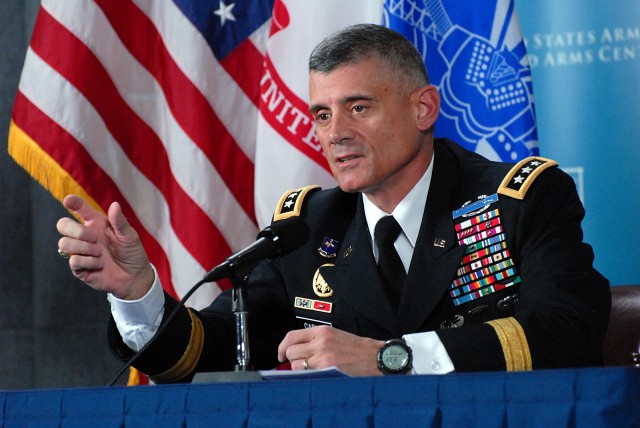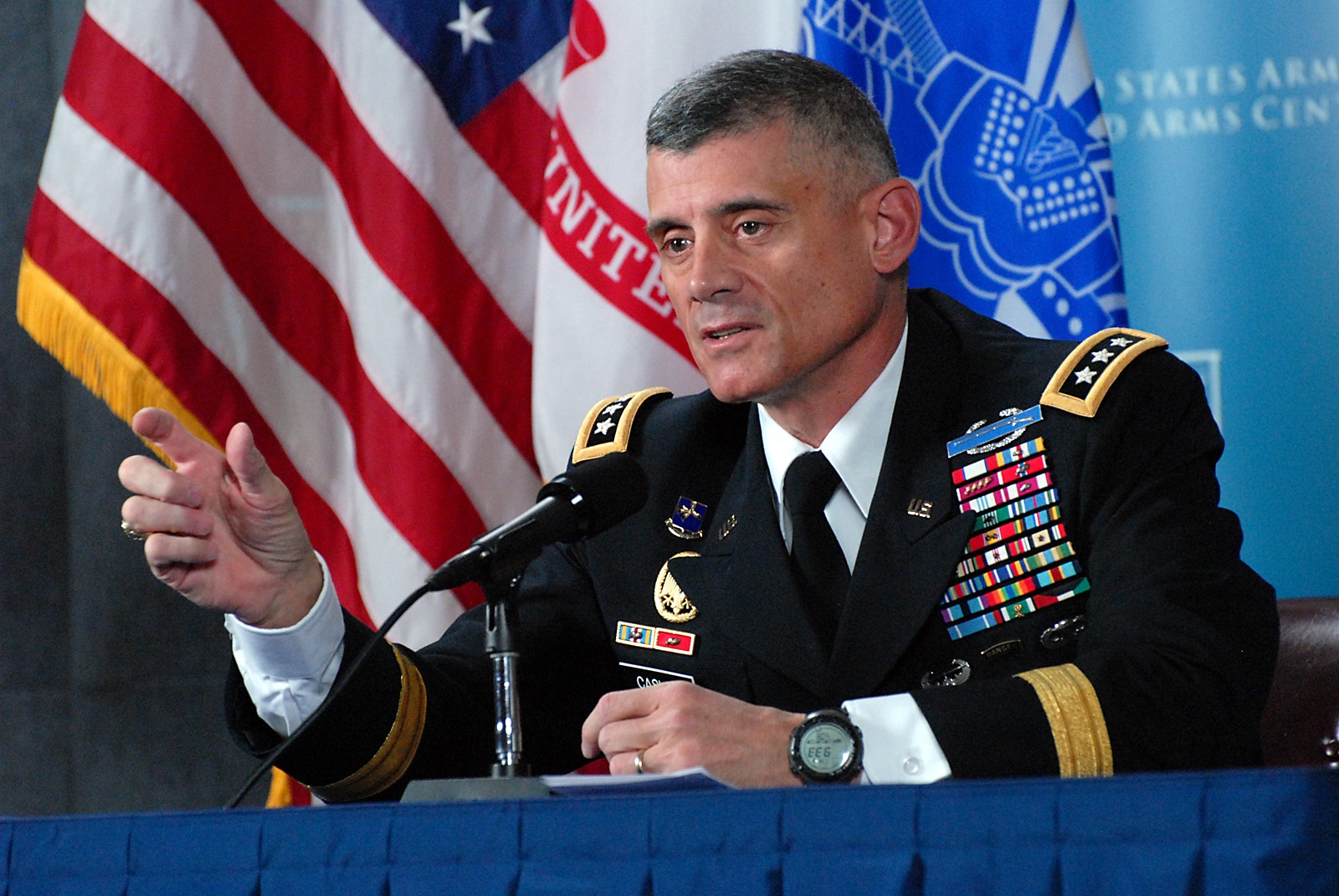FORT LEAVENWORTH, Kan. (April 15, 2010) - Lt. Gen. Robert L. Caslen Jr., commander of the Combined Arms Center and Fort Leavenworth, has been on the job about six weeks, much of that time spent off post using a hands-on approach to learn about how CAC functions Armywide.
Caslen discussed his top priorities with journalists at a roundtable April 8. His priorities include establishing the Mission Command Center of Excellence at Fort Leavenworth, implementing the Army Leader Development Strategy and finding a way to create a learning environment that will stimulate young Soldiers.
The Mission Command Center of Excellence is being developed to fulfill a need based on the Army's warfighting functions, Caslen said. Throughout the Army there are Centers of Excellence for intelligence, maneuver, logistics and fires, for example, but not command and control.
"And arguably command and control, which is the brain of how we fight, the intelligence of what we do and the systems that support all that. There is no (Mission Command Center of Excellence)."
Caslen said the Mission Command Center is now staffed and coming up with its strategy.
"They're already doing work," he said. "We're already giving them stuff to do. We had a meeting just the other day on what some of the organization ought to look like."
One of the Mission Command's key areas of focus, Caslen said, is electronic warfare.
"Because as you know, the future of cyber is not only to protect our networks but to be on the offense in the future," Caslen said. "It's one of the key future operational environments we'll be fighting wars in."
He told journalists that command and control was an important component in his recent deployment as commanding general of the 25th Infantry Division and commanding general of the Multi-National Division - North in Iraq. His unit's operating environment was the size of Pennsylvania.
"I had 23,000 Soldiers at numerous combat outposts and forward operating bases, and I could sit there in my base headquarters at Camp Stryker and talk to all of them at one time or each one individually," Caslen said. "So, what is the command and control system that allows you to do that' Not only to communicate verbally with them, but also to communicate digitally."
Upon being assigned to Fort Leavenworth, Caslen said Gen. Martin Dempsey, commanding general for Training and Doctrine Command, gave him seven pages of written guidance for his new position. The first priority on the list, Caslen said, was leader development for junior and senior leaders. Caslen's task is to enhance the leadership programs already on post and to ensure Armywide schools that fall under CAC are continuing leadership education.
Caslen said in his experience, leadership is an important part of building relationships with superiors, subordinates and partner agencies.
"The best leaders were those who were not only confident, not only cared, but probably the one intrinsic characteristic that they developed was the ability to develop and earn the trust of their subordinates and the trust of their superiors," Caslen said. "We have an organization where people trust each other primarily because of integrity and confidence."
In Iraq, for example, he learned that U.S. Soldiers had to gain the trust of the Iraqi military and police so that they could transfer power over to that country's own forces.
"You don't develop these relationships just based on control or brute force or intimidation," he said. "You develop them based on sitting there, drinking tea, listening to them, understanding their culture, understanding their issues ..."
Caslen's priority in creating a learning environment has to do with the Army's latest technology and young Soldiers growing up using new technology. He visited a simulation of the battle of Combat Outpost Keating on Oct. 3, 2009, in Afghanistan in which eight U.S. service members were killed. The simulation provided a 360-degree view of the battle that could be stopped and started at any time so that Soldiers could discuss what happened.
"That's the way to learn, rather than just have someone up there with a Power Point slide saying, 'This is what happened, and this is what you need to do,'" he said. "So that's the type of learning environment we're trying to create."
In his opinion, Caslen said, reconnecting with the family is just as important as military education. He said he wanted Soldiers to use Fort Leavenworth to catch up on their lives after deployment and take advantage of the programs on the installation.
"They'll be home every night to tuck their kids in bed," he said. "They'll be home every evening to have dinner with their family, and their spouse knows when they're coming back and they're learning how to be dads and moms again. They're learning how to be husbands and wives again."


Social Sharing